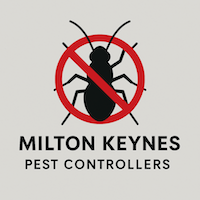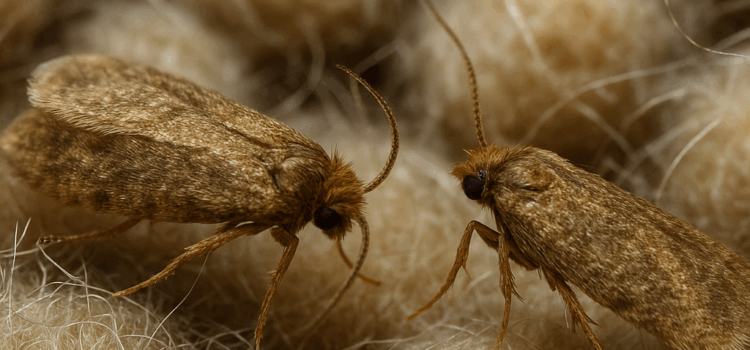Carpet Moth Identification in Milton Keynes (MK1–MK19)
Not sure if it’s carpet moth or “just wear”? Here’s the no-fluff guide for MK homes to ID the culprit quickly—so you can fix it before the pile disappears.
Quick ID Checklist (2-Minute Scan)
- Bald patches in wool or wool-blend carpets, especially along skirtings and under furniture.
- Fine silk-like webbing at edges/under rugs.
- Grainy “sand” (larval droppings) in the pile or on the hard floor next to the carpet.
- Adults low and lazy: small buff/brown moths hugging walls/floors at night (not zooming around lights).
- Little tubes or cases (looks like rice with fibres) = case-bearing larvae present.
The Usual Suspects in Milton Keynes
Common/Clothes Moth (Tineola bisselliella)
Adult: golden-buff, plain wings. Larvae: cream, head darker; make silky webbing in edges and dark areas.
Case-Bearing Clothes Moth (Tinea pellionella)
Adult: mottled brown/grey. Larvae: carry a portable case made of carpet fibres—look for small, fibrous tubes.
Both target keratin in wool and other animal fibres—synthetics suffer only if blended with wool.
Not Moths? Check These Lookalikes
- Carpet beetles (variegated/furniture): small oval beetles; the damage is similar but you’ll find furry “woolly bear” larvae and shed skins, not webbing/cases.
- Wear & tear: even wear fades evenly; moth damage looks patchy, scalloped, or edged near skirtings and under sofas.
Where to Look (Hotspots)
- Along skirting boards and door thresholds
- Under big furniture and heavy rugs
- Dark, low-traffic rooms and spare bedrooms
- Edges near wardrobes, beds and radiators
How to Self-Check (No Lab Coat Required)
- Grab a torch + crevice tool. Lift rug corners and check edges and underlay line.
- Photograph: a) the damaged patch (wide), b) close-up of webbing/case/frass, c) any adult moth on a wall.
- Place pheromone traps in affected rooms for 2–3 weeks to confirm activity.
- Still unsure? Send the pics—we’ll tell you moth vs beetle and what to do next.
Seasonality in MK (Why It Flares Up)
Spring–summer is prime time (warmer rooms, windows closed at night, low airflow). Keep up edge vacuuming and trap checks then. In winter, don’t ignore spare rooms—larvae keep munching in peace.
What To Do After You’ve Identified Carpet Moths
- Intensive vacuum (edges, under furniture, lift rugs) and empty the bag outside.
- Run pheromone traps to monitor males.
- For active larvae, consider professional treatment (residual + IGR) in edges/voids for a full life-cycle knockdown.
- Fix drivers: declutter, ventilate, and store woollens/rugs clean and sealed.
FAQs
Do adults eat the carpet?
No. Larvae do the damage. Adults just advertise the problem.
Are synthetic carpets safe?
Mostly, yes—but wool blends can still be attacked where wool is present.
Will traps cure the problem?
Traps are for monitoring and catching males. They help, but you still need cleaning and (often) targeted treatment.
Do I need to replace the carpet?
Not usually. Treat, clean and protect. Badly damaged patches may need repair.

